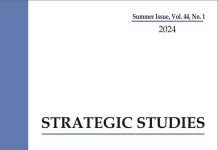Iran: A Modern History Abbas Amanat’s is not a traditional account of the Iranian history; rather it is an entirely unconventional discourse on history by a historian who displays a great grip on the subject. The book, a Yale university press publication, is an enlightening read but only for the truly devoted disciples of history, owing to its comprehensive nature. Panning over 900 pages, this beautifully written history of Iran covers accounts from 1501 to 2009. The author is a skilful historian and narrator whose words grip the readers from beginning till end. To an observant reader, this book reflects the author’s love and pride of the Iranian civilisation.
The book comprises of four parts: A Shi’i Empire; Reshaping of the Guarded Domains; A Nation Recast and A Contested Revolution and the Rise of the Islamic Republic. Amanat has recounted the history of the Iranian civilisation in a sequential manner but through the lens of theological analysis. Throughout the chapters, the flow of writing is both sequential and thematic which accentuates the historic course of events with analysis that focuses on the role of clergy intertwined with the political identity of the Iranian state. Iran, as a land oft-invaded has distinctively preserved its culture above all other attributes of its ancient heritage. As the author noted, credit goes to the prevalent quality of the Persian language, which owing to the adoption of Arabic script in the early ninth century was sufficiently preserved.













